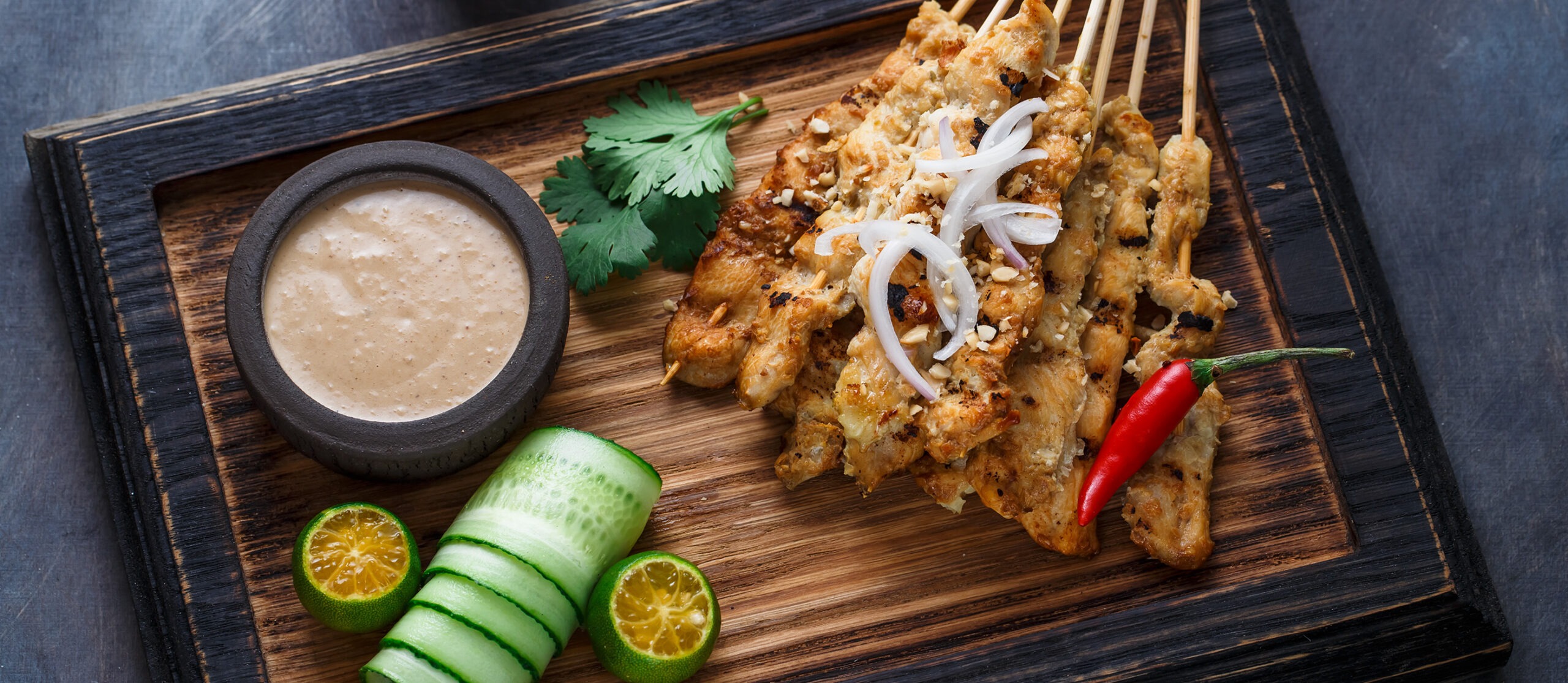Exploring Snake Satay: A Unique Culinary Adventure 2024
Snake satay, known as “sate ular” in Indonesian, is a distinctive and adventurous dish that holds a special place in the culinary landscape of certain regions. While it may evoke curiosity and even apprehension among some, snake satay offers a...
Snake satay, known as “sate ular” in Indonesian, is a distinctive and adventurous dish that holds a special place in the culinary landscape of certain regions. While it may evoke curiosity and even apprehension among some, snake satay offers a unique gastronomic experience that is deeply rooted in tradition and culture. Let’s delve into the world of snake satay and uncover its origins, preparation, and cultural significance.

Origins and Cultural Context:
Snake satay traces its origins to certain regions in Indonesia, where it is considered a delicacy and often served during special occasions or festivities. Historically, snake meat was consumed by indigenous communities for its purported medicinal properties and as a source of protein in areas where other meats were scarce.
Preparation and Cooking:
The preparation of snake satay typically begins with the selection of fresh snake meat, which is then marinated in a blend of spices and seasonings to enhance its flavor. The marinated meat is skewered onto bamboo sticks and grilled over an open flame until cooked to perfection. The result is tender, succulent snake meat infused with smoky, aromatic flavors.
Culinary Experience:
Tasting snake satay is a unique culinary experience that offers a blend of textures and flavors. The meat is known for its firm yet tender consistency, with a flavor profile that can vary depending on the species of snake used and the marinade ingredients. Some describe snake meat as slightly gamey with a hint of sweetness, while others liken it to chicken or fish.
Cultural Significance:
In certain cultures, snake satay holds cultural significance beyond its culinary appeal. It is often served during traditional ceremonies, rituals, or celebrations as a symbol of prosperity, strength, and resilience. Additionally, snake meat is believed to possess medicinal properties in traditional folk medicine, with practitioners attributing various health benefits to its consumption.

Controversy and Ethical Considerations:
Despite its cultural significance and culinary appeal, snake satay is not without controversy. Animal rights activists and conservationists raise concerns about the ethical implications of consuming snake meat, particularly jpslot regarding the treatment of snakes and the impact on wild populations. Additionally, there are concerns about the sustainability of harvesting snakes for food and the potential threat to biodiversity.
Snake satay offers a fascinating glimpse into the diverse world of culinary traditions and cultural practices. While it may not be for everyone, its unique flavors, cultural significance, and historical roots make it a noteworthy dish worth exploring. Whether enjoyed for its exotic appeal or embraced as a cherished tradition, snake satay continues to captivate adventurous food enthusiasts and spark intriguing conversations about food, culture, and ethics.
Exploring the Pros and Cons of Snake Satay: A Culinary Adventure
Snake satay, or “sate ular” in Indonesian, is a unique and exotic dish that sparks curiosity and intrigue among food enthusiasts. While it offers a distinctive culinary experience, snake satay also comes with its own set of advantages and disadvantages. Let’s delve into the pros and cons of indulging in this unconventional delicacy.
Pros:
- Unique Culinary Experience: Snake satay offers a one-of-a-kind culinary adventure, providing diners with the opportunity to explore exotic flavors and textures not commonly found in traditional cuisine. For adventurous eaters, trying snake satay can be a memorable and enriching experience.
- Cultural Significance: In certain regions of Indonesia, snake satay holds cultural significance and is often served during special occasions or ceremonies. Embracing this traditional dish allows individuals to connect with local customs and traditions, fostering cultural appreciation and understanding.
- Potential Health Benefits: Snake meat is believed to offer various health benefits in traditional folk medicine, with proponents attributing properties such as increased vitality, improved circulation, and enhanced immunity to its consumption. While scientific evidence is limited, some cultures value snake meat for its purported medicinal properties.

Cons:
- Ethical Considerations: The consumption of snake meat raises ethical concerns regarding animal welfare and conservation. Snakes are often subjected to inhumane treatment and harvesting practices, leading to animal rights activists and conservationists advocating for the ethical treatment of snakes and the preservation of wild populations.
- Health Risks: Despite its potential health benefits, consuming snake meat carries certain risks. Snake meat may harbor pathogens and parasites that can cause foodborne illnesses if not handled and cooked properly. Additionally, individuals with allergies or sensitivities to snake venom should exercise caution when consuming snake meat.
- Environmental Impact: Harvesting snakes for food can have environmental consequences, particularly in regions where snake populations are already threatened or endangered. Overexploitation of snake populations for culinary purposes can disrupt ecosystems and contribute to biodiversity loss, posing long-term environmental challenges.
Conclusion:
Snake satay offers a unique and adventurous dining experience, but it also comes with ethical, health, and environmental considerations. While some may appreciate its cultural significance and potential health benefits, others may have reservations about its ethical implications and environmental impact. Ultimately, whether to indulge in snake satay is a personal choice that requires careful consideration of its pros and cons, as well as a respect for ethical and environmental concerns surrounding its consumption.
Read More Article About “Masa Depan Kesehatan: Inovasi dan Perubahan dalam Dunia Kedokteran“


![West African Examinations Council (WAEC) GCE May/June Timetable For 2022/2023 WASSCE School Candidates Examination Exercise [Final International Timetable Released] | Download The PDF File Version Here For Free](https://micplustech.com/wp-content/uploads/2019/12/17264943_1445210792185245_7643945034402954664_n.jpg)






